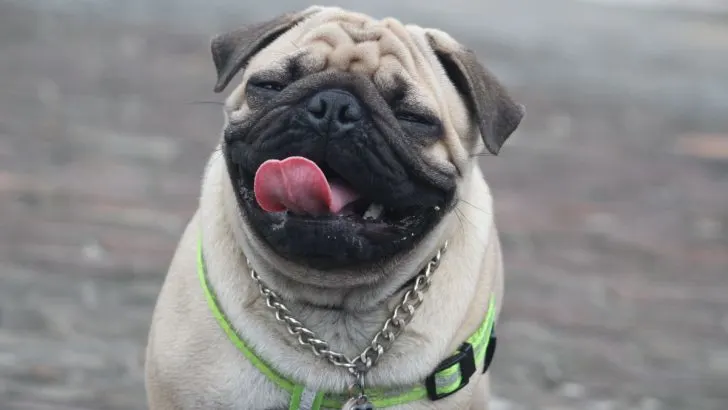Pugs are cute, playful, and loveable. They are also very sensitive, with unique dietary needs. Understanding Pug feeding charts is crucial to ensuring your doggie lives a healthy and happy life.
Your Pug deserves the best food possible! He also needs some looking after to ensure he doesn’t get obese. At the same time, you don’t want to go overboard and give him too little food and cause malnutrition.
This is where the Pug feeding chart comes in handy! It can help you achieve balance your doggie needs.
Without further ado, here’s everything you need to know about feeding your beloved Pug:
Pug Feeding Chart By Age
Pugs are brachycephalic dogs prone to obesity. This alone is enough to understand they have some specific needs you need to cater to if you want them to be their healthiest selves.
Choosing the right food is very important, but it’s equally important to pick the proper feeding schedule.
Here are some general guidelines:
| Age | Times Dry food a day | Wet canned food | Home cooked or raw | Type of food |
|---|---|---|---|---|
| 2 – 3 months | 4 ¼ cup | 3 oz | % 5-6 of body weight | Puppy food |
| 3 – 6 months | 3 ⅓ cup | 4 oz | % 4-5 of body weight | Puppy food |
| 6 – 12 months | 2 ¾ cup | 9 oz | % 3-4 of body weight | Adult food |
| 1 – 8 years | 2 ⅓ cup | 6 oz | % 2-3 of body weight | Adult food |
| 8+ years | 2 ⅓ cup | 4 oz | % 2 of body weight | Senior dog food |
Pug Puppy Feeding Chart

All pugs need a balanced diet with a proper amount of nutrients. They also need a specific amount of food that will be enough to aid their development while keeping them from becoming obese.
The feeding schedule and the amount of food, however, will depend on your dog’s age and size.
Pugs are small dogs, so their diet needs to be properly adjusted. Still, they are far from being the smallest dogs out there, so their feeding chart might be closer to the Miniature Schnauzer feeding chart than the Chihuahua one.
Here is what kind of food and in which amounts you should give to your Pug puppy:
Birth To 8 Weeks Of Age
This is a crucial period for your pup’s development, especially for the development of his immune system.
At first, all your puppy needs for healthy growth is his mother’s milk. This will last for the next 6 to 8 weeks while your puppy is still blind, deaf, and helpless.
Near the end of this stage, your Pug will need to start eating solid foods to get all the essential nutrients he might need.
During this time, Pug puppy eats around 4 times a day.[1] If the mother Pug is not around or is unable to feed, something that can commonly happen with Pugs that have had birth via cesarean section, you’ll need to use replacement milk.
Cow’s milk is not suitable for young puppies or even adult dogs. Never use cow’s milk to feed your Pug puppy, as it can cause diarrhea, vomiting, and tummy upset.
8 To 12 Weeks
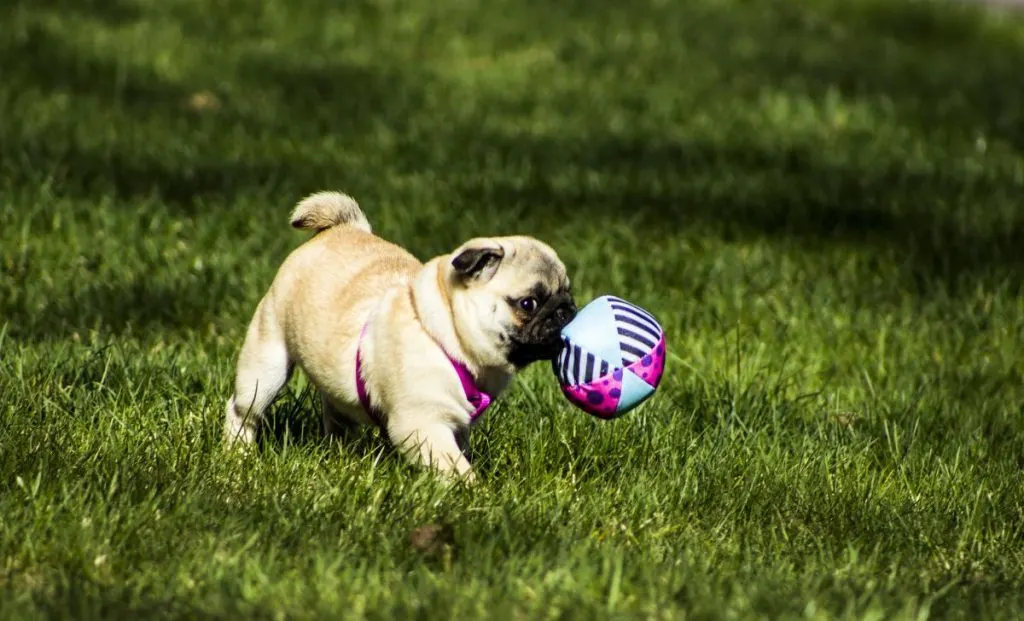
This is the time your Pug will transition from mother’s milk to puppy food. His activity levels will increase, and he’ll need a different nutrition that can keep his body running.
The transition can be very hard for his stomach, so you need to take it slow.
Try to make a puppy mush to help your dog out. This is made using a high-protein, large breed puppy dry foods and mixing it with water or milk replacer. The liquid should soften the kibble but not make it too liquidy so your puppy can still munch on it.
Once a few days have passed, make a thicker puppy mush. Then, simply soak the kibble so that it softens a tiny bit.
Finally, your pup should be eating plain puppy food between 10 and 12th weeks of age.
You should feed Pug puppies four to three times a day in tiny amounts. This will help his metabolism and keep his stomach full.
3 To 6 Months
During this time, your Pug puppy will experience rapid growth. However, he’ll still require puppy food – but only in different amounts.
By this time, your Pug’s food diet should consist of 3 meals a day, which is more than enough to help him maintain a healthy weight and proper growth rate.
This is an important time for your Pug’s bones and muscles, so make sure his food is rich in protein and healthy fats.
Also, provided you’ve vaccinated your pup on time, this is a great time to start taking your Pugs on walks. Just don’t go overboard, as too much exercise might lead to health issues, such as hip dysplasia.
6 To 12 Months

Once your Pug is six months old, it’s time to slowly switch to adult food. Once again, you should prepare him some transition food, but this time, mix some adult dog food with puppy food.
As time passes, give him more and more adult food and lessen the amount of puppy food. Finally, about one month after you’ve first started changing his diet, he should be entirely used to adult dog food.
The feeding amount should also change, as now it’s okay to slowly make your pup used to eating two times a day in larger amounts.
Don’t shy away from commercial kibble, as it can be good for dental health while also providing a proper balance of nutrients. Just make sure it’s developed for small dog breeds.
Mix this with some wet food to provide the hydration all dogs need. Also, as Pugs are prone to obesity, they should avoid foods with a fat content that is too high.
Older Than 7 Years
It is challenging to say when your dog becomes an elder, but this usually happens between 7 and 8 years of age.
During this time, his body’s metabolism will slow down, and he’ll become less active. This also means that his dietary needs will change, so it’s time to switch to senior dog food.
Make sure the food is rich in minerals and vitamins such as Omega 3, glucosamine, and chondroitin, which can help many common issues that plague old Pugs, such as arthritis.
They can also struggle with dental issues, so make sure to provide them with healthy kibble and dental treats that will keep their teeth and gums healthy.
What Food Is The Best For Pugs?
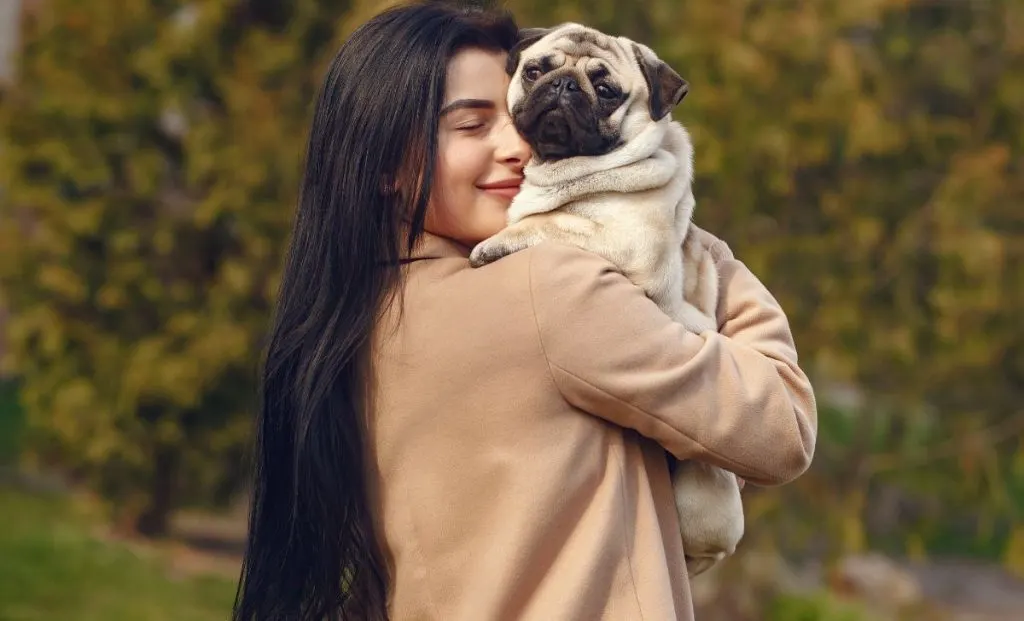
Many dog owners struggle with choosing the best food for Pugs. Generally, however, you cannot go wrong with picking some popular choice of commercial dog food for small dogs in the pet store.
All Pugs need a balanced diet made for their needs. Puppies need a different diet from adult dogs, and they need a different diet from senior dogs.
Still, no matter their age, the necessary nutrients stay the same.
If you need proper diet help, here’s what you need to know:
Protein
Proteins are necessary to help dogs keep up with their energy needs.
While Pugs don’t have high activity levels, they still need many proteins. In fact, it would be best if their diet consisted of 20-30% of proteins.
Look for animal-based protein sources such as beef, chicken, lamb, or fish. Some Pugs might be picky eaters, so try finding a protein source they’ll love.
Healthy Fats
Healthy fats are important for Pug’s overall health. Not only that, but they are necessary for keeping their skin and coats healthy. Considering how Pugs are prone to numerous skin issues, you can see why fats are vital.
They are also essential for brain development, and they aid proteins in maintaining healthy energy levels.
Healthy fats should constitute about 10-15% of Pug’s diet.
One thing to keep in mind, although I know I have already mentioned this: These dogs are prone to overeating. While fats are important, too much fat will lead to weight gain. This is why you should always keep an eye out for the percentage of fat in commercial kibble.
Carbohydrates
Pugs generally don’t need a lot of carbs in their diet, but they do need some.
Choose options such as oats, brown rice, and peas, and try to avoid corn. You can also supplement their diet with fruit such as pumpkin, apples, and blueberries.
Once again, just don’t go overboard. Carbs can cause a more significant weight gain than fats, so be wary.
Vitamins And Minerals
Vitamins and minerals are important for healthy skin, brain, and bones. They also help keep their immune systems active.
Next to the already mentioned glucosamine and chondroitin, look for foods fortified with vitamins A, B, C, D, E, and minerals like phosphorus, calcium, and potassium.
You can even buy some supplements that will further help keep your pooch healthy. Just remember, never introduce new nutrients without consulting with your veterinarian first.
Raw Diet For Pugs
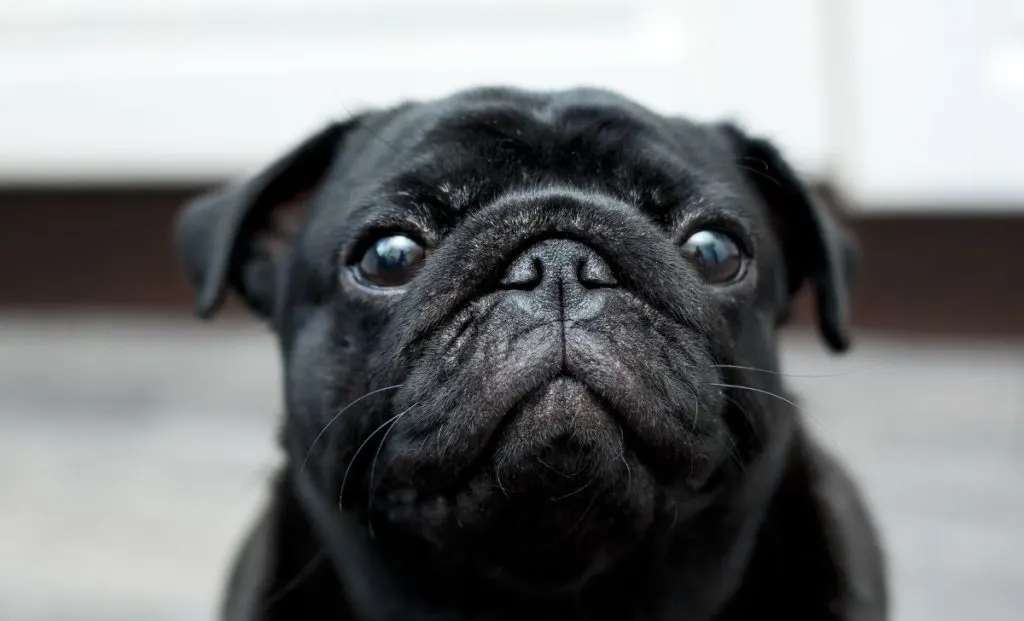
You’ve heard of a raw diet for Cane Corsos or for Pitbulls, but what about Pugs?
Not many people opt for a raw food diet for Pugs, but it is possible.
A raw diet for pugs should be well-balanced and carefully planned to ensure they get all the necessary nutrients. Your veterinarian might help you create a Pug feeding chart for raw foods.
In general, this diet consists of a lot of raw meat and bones, but it should also contain some fruits and veggies for balance.
However, raw diet is a topic of debate for many experts and dog lovers alike.
While there are numerous health benefits, as it’s more similar to the food Pug’s ancestors have eaten, and you can be certain your dog will only get natural ingredients, it also has some challenges.
Portion control is quite difficult when you’re feeding raw, as it can be challenging to precisely count all the calories.
Also, you can never be entirely certain your pooch is getting all the necessary nutrients.
In general, a raw diet is considered to be more suitable for dogs with high energy levels. Our little couch potatoes could have just as many benefits from commercial foods enhanced with some healthy snacks.
Is The Vegetarian Diet Okay For Pugs?
Some people think a vegetarian diet is suitable for Pugs. Once again, this is a topic for debate, and this isn’t a decision you should make without consulting your veterinarian.
There is a widespread belief that dogs, just like humans, are omnivores. It is true that they greatly benefit from some fruits and leafy greens. However, new pieces of research have shown that dogs in nature are carnivores, as they solely rely on prey.
While this is an ongoing discussion, one thing is certain: A dog of any breed can stay on a vegetarian diet, but only if it’s properly planned to make sure your dog is getting all the necessary nutrients.
If you, for any reason, insist on feeding your Pug a vegetarian diet, please make sure to ask for a vet’s opinion.
Do Pugs Know When They’re Full?
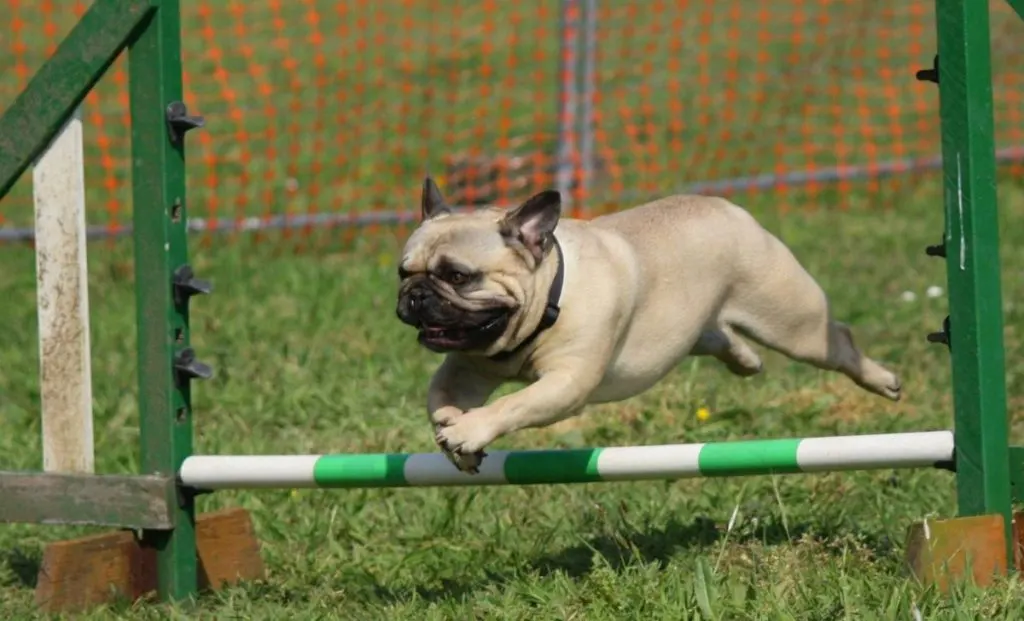
Most dogs and cats generally know when they are full. However, they are prone to overeating and are likely to keep on eating for as long as they have food available. This is one of the main causes of weight gain in Pugs.
Dogs overeat for several reasons. First off, it’s a part of their instincts. Their ancestors had limited amounts of food, so once they’d manage to catch a prey, they would eat it whole. This is because the next meal was always uncertain.
Not only that, but owners tend to worsen a dog’s eating habits by giving them too much food or too many portions.
When we see our dogs eating voraciously, we’ll think they must be hungry, so we’ll give them more food. Similarly, when they look at us with those puppy eyes, we’ll give in and give them a treat or two.
This is how dogs gain weight.
Finally, even though a Pug will probably know when he is full, he’ll still keep on eating – both due to instincts and because he simply loves eating.
This is why portion control is so important.
What Foods Can Pugs Not Eat?

One thing not covered in the Pug’s feeding chart is what foods should Pugs avoid.
In general, most human foods are a risk for your four-legged friends, especially if we find them tasty.
This is because Pugs shouldn’t eat any sugar, chocolate, or dairy products.
They should also stay away from processed foods, as well as all spices.
Many fruits and vegetables that we love are also dangerous for them, such as garlic, onion, avocado, grapes, and macadamia nuts.
Dogs can get specific health issues by eating foods that are not suitable for their sensitive tummies. As such, the safest bet is to always stay in touch with your veterinarian and ask him about any new food you’d like to introduce to your puppy.
A healthy Pug is a happy Pug, and this can only be fulfilled through a healthy, balanced diet.
References:
1. LP, Case & Daristotle, L. & MG, Hayek & Raasch, M.F.. (2011). Canine and Feline Nutrition. 10.1016/C2009-0-39175-8.
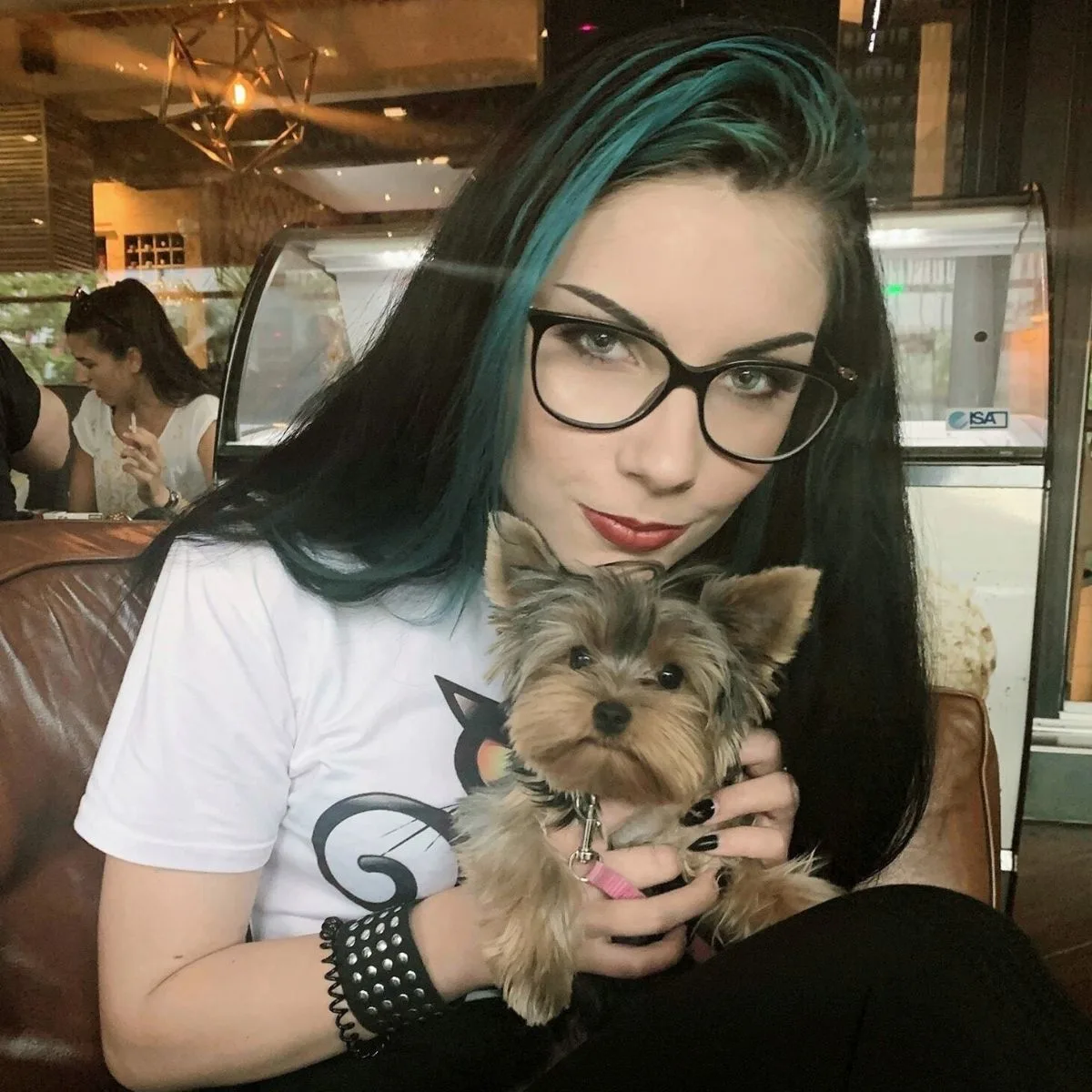
Vanja’s passion for writing started at an early age, which is why she pursued Journalism as her college degree. She can research any topic and find all the information before you bat an eye, which is a great thing for her job but a terrible one for her husband.
Even as a young child, she fell in love with everything fluffy – but dogs have a special place in her heart due to her childhood companion, a Corgie named Archie.
Motivated by her experiences and driven by a desire to give back to her four-legged companions, she spends her free time volunteering at a local dog shelter.
